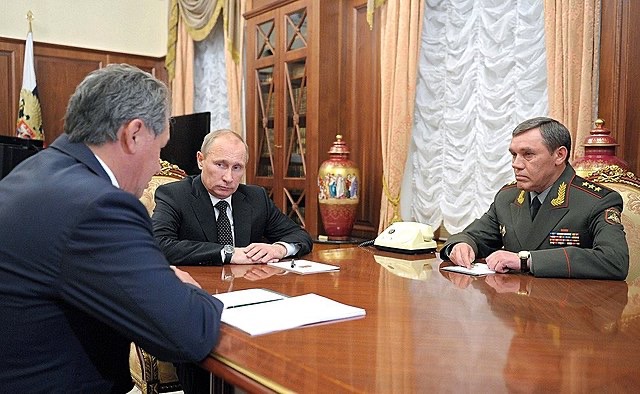Russia’s latest military maneuver is sending shockwaves across Europe and beyond. Following what Ukrainian officials describe as the largest drone assault since the start of the full-scale invasion in 2022, Russian military forces are reportedly preparing to launch an intercontinental ballistic missile (ICBM) from the Sverdlovsk region. The missile in question—an RS-24 Yars—represents one of the most powerful weapons in Moscow’s strategic arsenal.
The move has been labeled a “training and combat” launch by Ukraine’s military intelligence agency, GUR, and is widely viewed as a show of force meant to rattle NATO and the EU amid increasing battlefield pressure in eastern Ukraine. While Russia remains officially silent about the operation, global military analysts and diplomatic leaders are expressing growing alarm.
The timing—just days after peace talks and amidst one of the most intense waves of drone attacks since the war began—has prompted warnings of escalation, miscalculation, and a chilling reminder of the potential for nuclear-capable weaponry to further destabilize the region.
RS-24 Yars ICBM: A Strategic Weapon
The RS-24 Yars, also known by its NATO designation SS-29, is a state-of-the-art, nuclear-capable intercontinental ballistic missile developed by the Moscow Institute of Thermal Technology. Capable of carrying multiple independently targetable reentry vehicles (MIRVs), the Yars has a reported range exceeding 10,000 kilometers, making it a formidable deterrent against both regional and global adversaries.
First deployed in 2010, the Yars has since become a cornerstone of Russia’s strategic nuclear triad. The missile can be launched from both silos and mobile platforms, enhancing its survivability and rapid deployment potential. Each Yars missile is believed to be equipped with up to four warheads, allowing it to strike multiple targets simultaneously with devastating precision.
Though these tests are not unprecedented, the geopolitical context surrounding this one makes it particularly provocative. Given current tensions, such a move is likely intended to project power and control amid mounting international scrutiny and Ukraine’s ongoing resistance.
Ukraine’s Intelligence Alert
The revelation of the impending missile test came from Ukraine’s defense intelligence agency (GUR), which reported the planned launch as part of a “training and combat” readiness operation. The alert has since been shared with NATO command structures and Western intelligence partners.
According to the GUR, the missile will be launched from the Russian Sverdlovsk region, deep in the Ural Mountains—a strategic location that reinforces the Kremlin’s long-range strike capability. Ukrainian officials have expressed concern that the launch could be used to intimidate not just Kyiv, but Western Europe and the United States, particularly in light of NATO’s increased support for Ukraine.
The warning included appeals for allied nations to remain vigilant and consider the broader implications of Russia demonstrating the readiness of its nuclear delivery systems during ongoing combat operations.
The Largest Drone Strike Since 2022
The missile test announcement comes on the heels of a massive aerial onslaught involving over 270 drones launched by Russian forces. Targeting key cities including Kyiv, Dnipropetrovsk, and Donetsk, the strikes inflicted heavy damage on infrastructure and resulted in several civilian casualties.
Ukraine’s air defense systems intercepted many of the incoming drones, but dozens penetrated defenses, sparking fires, knocking out power grids, and damaging residential areas. It marked the most intense use of drone warfare by Russia since its invasion more than two years ago—underscoring a renewed strategy of attrition and psychological pressure.
Ukrainian President Volodymyr Zelenskyy condemned the attacks, calling them a “barbaric escalation” that further proves Moscow has no interest in diplomacy or de-escalation. He appealed once again for more advanced air defense systems from allies and stronger international sanctions against Russia’s weapons manufacturers.
Missile Launch: Timing and Intent
The timing of the missile test appears to be meticulously calculated. Coming just days after the most intense drone barrage since the start of the war—and mere hours after failed ceasefire talks—the RS-24 Yars launch is being interpreted as a message to both Kyiv and Washington.
Analysts suggest that the launch serves several objectives:
- Deterrence: Reinforcing Russia’s willingness to escalate if NATO increases its involvement.
- Distraction: Diverting global attention from battlefield losses in eastern Ukraine.
- Posturing: Demonstrating that Russia remains a formidable power, even under economic and political pressure.
This strategic signaling isn’t new, but pairing a nuclear-capable ICBM test with ongoing drone strikes amplifies the perceived threat exponentially. It also raises questions about the Kremlin’s endgame and whether Russia is prepared to push boundaries that were once considered unthinkable.



